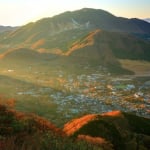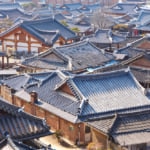Name: Numakuma Shrine
Address: 1225 Tomocho Ushiroji, Fukuyama City, Hiroshima Prefecture
Official/Related Website URL: http://tomo-gionsan.com/

6 recommended tourist spots in Tomonoura, a historical area in Fukuyama City, Hiroshima Prefecture
Tomonoura, located in Hiroshima Prefecture, has flourished as a port town for over 1,000 years. It is also known as a place visited by many historical figures, including well-known personalities like Ashikaga Takauji and Sakamoto Ryoma. Just imagining that such famous people came to this port is enough to excite anyone.
Not only is it rich in history, but its beautiful scenery has also captivated many artists and has been depicted in paintings. It even served as the model for the Studio Ghibli film "Ponyo on the Cliff by the Sea." In addition to the port, there are many historic buildings that have remained since ancient times.
Even those who are not particularly interested in history can enjoy sightseeing in Tomonoura. Just thinking, "Did Sakamoto Ryoma walk here?" as you stroll through the area makes it even more enjoyable. Here are six carefully selected sightseeing spots in this charming town. From well-known sites to surprising hidden gems, this list is sure to make you want to visit Tomonoura.
table of contents
[x] close
6 recommended tourist spots in Tomonoura, a historical area in Fukuyama City, Hiroshima Prefecture
- 1. The long-standing "Numakuma Shrine"
- 2. National Important Cultural Property "Ankokuji Temple"
- 3. A must-see without exception "Tomonoura"
- 4. Hidden gem "Fukuyama City Tomonoura Museum of History and Folklore"
- 5. Beautiful view "Ioji Temple"
- 6. Refresh your travel fatigue at "Tomonoura Onsen"
- ◎ Summary
1. The long-standing "Numakuma Shrine"
Numakuma Shrine is known as a representative shrine of Tomonoura and is said to be the birthplace of the Gion Festival. It is an old-fashioned shrine dedicated to Ōwatatsumi no Mikoto, the god of the sea, and Susanoo no Mikoto, the god of learning.
It is also famous as the Noh stage associated with Toyotomi Hideyoshi and has been designated as a National Important Cultural Property. Many tourists visit for the annual festival held on May 2. It is one of the shrines you should definitely visit when in Tomonoura.
2. National Important Cultural Property "Ankokuji Temple"
A 30-minute trip from Fukuyama Station. Although it appears to be an old and weathered temple from the Kamakura period, it is actually a remarkable place. Ankokuji is a Rinzai sect temple in Tomonoura, established by the Ashikaga brothers, Takauji and Tadayoshi, and was originally founded in the Kamakura period as Konpōji Temple!
Structures such as the Shakado Hall built during the Muromachi period, the wooden statue of the Amida Triad, and the seated statue of Hōtō Kokushi are designated as National Important Cultural Properties. Admission is free! The grounds of Ankokuji Temple are relatively compact, with the main hall located a short walk from the main gate.
Rather than rushing through, it’s recommended to take a leisurely stroll through the grounds. The autumn leaves are especially beautiful. The approach to the temple is lined with traditional old houses that make you feel like you’ve slipped back in time, so enjoy the walk as well.
Name: Ankokuji Temple
Address: 990-1 Tomocho Ushiroji, Fukuyama City, Hiroshima Prefecture
Official/Related Website URL: http://www.fukuyama-kanko.com/hyaka/spot053.html
3. A must-see without exception "Tomonoura"
Located at the tip of the Numakuma Peninsula, Tomonoura has long prospered as a “port of tide-waiting.” It is especially known as a central player in Japan’s economy within the Seto Inland Sea and is famous as a filming location for various anime and movies. The takiba (burning site) still exists in the sea today, where barnacles and shells clinging to the wooden hulls of ships are burned off and dried to extend the life of the vessels.
On the inland side, there is a boat guard station, and the stone walls from the Edo period remain intact. A boat guard station was essential in a port town as it managed and monitored the traffic and safety of ships.
The gangi (stepped quay) allows boats to dock regardless of the tide. You won’t often find a gangi of such scale at other ports. Nowadays, it’s used as a peaceful resting spot by both tourists and locals.
Other port-town-specific historical structures such as the ever-burning lantern (jōyatō) and breakwaters also remain. There is a reason why so many historical sites of Tomonoura have survived to this day—thanks to the thorough care and preservation by local residents.
This is something only possible through the deep appreciation of old Tomonoura, making it a uniquely charming place in Japan that we hope to see preserved forever. At sunset, the view is stunning, and it’s perfect for a leisurely walk. Sensuijima Island can be seen just a stone’s throw away, making the abundance of scenic spots another key attraction!
Name: Tomonoura
Address: Tomo, Tomocho, Fukuyama City, Hiroshima Prefecture
Official/Related Website URL: http://tomomonogatari.com/
4. Hidden gem "Fukuyama City Tomonoura Museum of History and Folklore"
This folklore museum was built thanks to research and collection efforts by local volunteers that began in 1977. It was constructed on the hilltop ruins of Tomo Castle as a commemorative project for the 70th anniversary of Fukuyama City. Exhibitions themed around the history, culture, and people of the Seto Inland Sea centered on Tomonoura are also held here. If you want to learn about Tomonoura, this is the place to go.
Special exhibitions are held every month, offering a chance to see rare displays unique to Tomonoura, including art, paintings, and seasonal flower tours. You’ll find unchanged sceneries, historical materials, townscapes, and tools, as well as things that have drastically changed over time.
Also, since the Tomonoura Museum of History and Folklore is located on a hill, it offers a beautiful view of Tomonoura floating on the Seto Inland Sea.
Name: Tomonoura Museum of History and Folklore
Address: 536-1 Tomocho Ushiroji, Fukuyama City, Hiroshima Prefecture
Official/Related Website URL: http://www.tomo-rekimin.org/floorguide.html
5. Beautiful view "Ioji Temple"
Ioji Temple, said to have been founded by the famous monk Kobo Daishi, is a hidden gem not widely featured in travel guides. It is one of Tomonoura’s lesser-known sightseeing spots and was also restored by Masanori Fukushima as a Shingon sect temple.
The view from the temple’s bell is known to be especially beautiful. About 500 stone steps beyond that leads to the Taishiden Hall, where you’ll be rewarded with another stunning panoramic view.
The 500 Rakan statues next to the main hall are overwhelming just to look at. Also be sure to visit the three-story pagoda located behind the temple—it’s designated as an Important Cultural Property.
Ioji Temple is such a wonderful sightseeing spot that you’ll wish more people would visit. It’s recommended to wear comfortable walking shoes.
Name: Ioji Temple
Address: 1397 Tomocho Ushiroji, Fukuyama City, Hiroshima Prefecture
Official/Related Website URL: https://goo.gl/ADGbdt
6. Refresh your travel fatigue at "Tomonoura Onsen"
Tomonoura Onsen springs from the Tomonoura area, drawing many visitors who want to ease their travel fatigue after sightseeing. The hot spring town has a tranquil and laid-back atmosphere. There are plenty of facilities from inns with open-air baths offering spectacular views of the Seto Inland Sea to day-use hot springs.
Sightseeing in Tomonoura involves a lot of walking up and down slopes, so it’s a great idea to take a break and relax in the hot spring town. With its nostalgic charm and echoes of olden history, this hot spring area is irresistible even at night for a quiet stroll. The relaxing vibe may bring about a sense of comforting nostalgia. Tomonoura also offers many gourmet delights that can only be enjoyed in the Seto region.
There’s no arguing with the combination of delicious food and relaxation in an onsen.
By the way, there’s also a hot spring facility on Sensuijima Island across the water, so feel free to choose your lodging based on your preference. Come and experience a soothing break from daily life at Tomonoura Onsen.
Name: Tomonoura Onsen
Address: Tomocho, Fukuyama City, Hiroshima Prefecture
Official/Related Website URL: http://www.tomonoura.co.jp/shuku.html
◎ Summary
What did you think about our introduction to Tomonoura's tourist spots? This historic port town has flourished and been loved for generations. With the Seto Inland Sea, mountains, hot springs, and even delicious cuisine, it has everything. Moreover, it’s full of old historic buildings and landmarks, so you might just spend an entire day sightseeing without realizing it.
And there are still many more attractions we couldn’t introduce here. Starting with Sensuijima Island, the amusement park Miroku no Sato also offers fun for both kids and adults—highly recommended to explore together!
RELATED ARTICLES
REGIONS
CATEGORIES
FEATURED ON Hiroshima
-
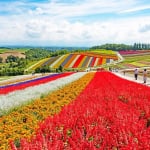
Where will you go for the summer vacation? Introducing recommended spots for domestic travel
-
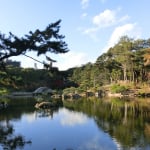
A Chill Spot in Hiroshima City!? A Complete Guide to the Highlights of Shukkeien Garden
-
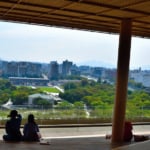
【Hiroshima】Tourist information for Orizuru Tower|Introducing sightseeing spots in the city center
-
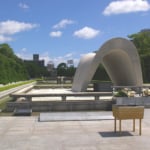
Tourist information on Hiroshima Peace Memorial Park|Introducing the highlights!
-
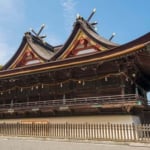
[4-day holiday in the Chugoku region] Summary of summer outing spots ◎ Enjoy the great outdoors!
MOST POPULAR ON Hiroshima
-
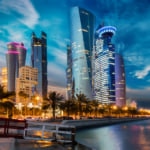 1
1Doha: Must-see Attractions in the Capital of Qatar
-
 2
2Toronto: 10 Things to do in this Picturesque Canadian City
-
 3
3Amarillo: A City Famous for It’s Amazing Canyons, Great History and Music
-
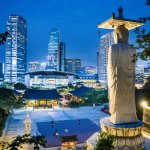 4
4South Korea: Dazzling Scenery, Rich Culture and Fascinating History
-
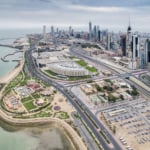 5
5Kuwait: A Country in Middle East Asia Famous for Hot Sand Dunes and Stunning Cityscape


